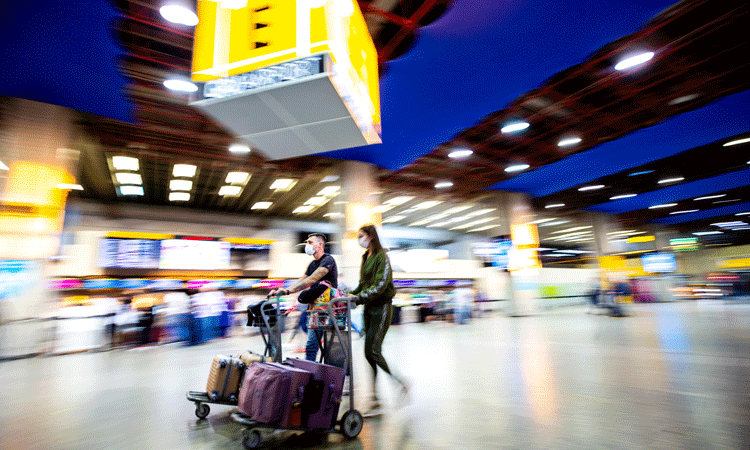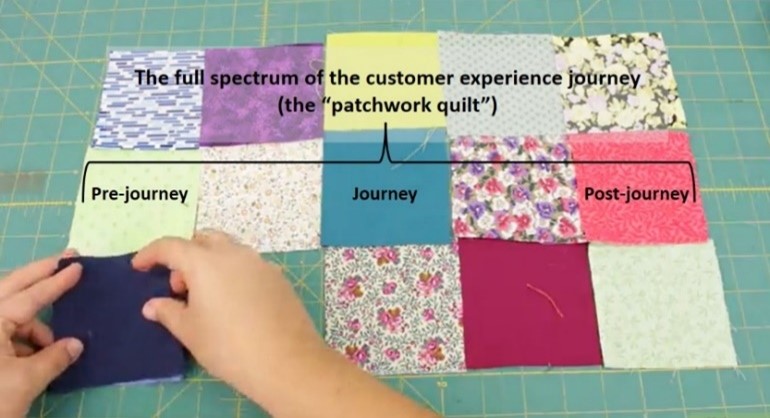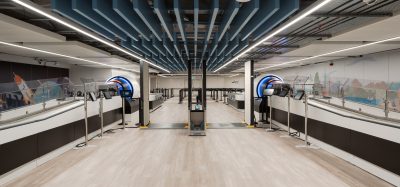Viewing the passenger experience as a patchwork quilt
- Like
- Digg
- Del
- Tumblr
- VKontakte
- Buffer
- Love This
- Odnoklassniki
- Meneame
- Blogger
- Amazon
- Yahoo Mail
- Gmail
- AOL
- Newsvine
- HackerNews
- Evernote
- MySpace
- Mail.ru
- Viadeo
- Line
- Comments
- Yummly
- SMS
- Viber
- Telegram
- Subscribe
- Skype
- Facebook Messenger
- Kakao
- LiveJournal
- Yammer
- Edgar
- Fintel
- Mix
- Instapaper
- Copy Link
Posted: 22 April 2022 | Daniela Fantinati | No comments yet
Daniela Fantinati, Head of Quality Management and Customer Experience at Aeroportos Brasil Viracopos S.A., believes that to achieve a positive passenger experience, much like a patchwork quilt, attention must be paid to all stages of the journey, starting from booking their flight to the moment the air passenger arrives at their destination.


It is difficult to overstate just how much the COVID-19 pandemic has devastated the civil aviation industry. Although almost every economic sector has felt serious repercussions, few have been as hard hit as the airports, airlines, and travel sectors. The good news is that they are slowly but steadily recovering as the number of flights are growing again and passengers are returning to air travel. Consequently, soon there will be many passengers travelling again to, and from, thousands of destinations in thousands of airports around the world – and they will all share the desire to arrive at their final destinations in a seamless, efficient, and swift manner.
A time for reflection
So, let’s take this pivotal moment of recovery – when customers are wary and looking for both health assurance and a good travel experience – to reflect on how powerful it is to map and understand the full spectrum of the passenger journey, or ‘the passenger journey beyond a single square’, in order for airports and airlines to provide the experience that the customers are looking for.
Usually, airport passenger experience (PAX) and operations managers map the customer journey while the passenger is at the airport – from the moment they arrive at the airport site to the moment the plane leaves the runway. As such, the PAX analysis is done only for the customer interaction touchpoints in the portion of the journey within the so-called ‘airport square’. However, one should be reminded that the passenger does not segment their own journey like this. When a customer decides to travel, they consider the journey as a bigger package, a combination of several ‘patchwork squares’ sewn together: from the moment they begin researching the ways to travel, then the process of buying tickets, passing through the airport, to the period inside the aircraft in the air and the moment of arrival at the destination. In other words, the customer has one goal: to begin and end their complete journey satisfied, regardless of who the provider of services is at each step of the journey. As the passenger progresses through each stretch – or ‘square’ – of the journey, the (either matched or unmatched) expectations from the previous ‘squares’ will influence the passenger’s expectation and perception of that particular square or area of their travel experience e.g., check-in or security.
Pre-journey
Considering that customer experience is more about how the passenger feels than what other people do when providing services to them, let’s have a look first at the square, labelled here as the ‘pre-journey’ – encompassing all the activities performed by the passenger before arriving at the airport.


At this stage, there are a few client/provider interaction steps, such as the research behind the trip, the interaction with the chosen airline to clarify questions, as well as the purchase of the airline ticket. The most common touchpoints between the passenger and the airline in this case are websites, cell phone apps, and travel shops. It is at this time that the client builds their initial expectations towards the trip. The passenger also gathers and interprets all information about the provided service, combines it with memories of past service experiences and adds their own expectations for the desired outcome.
Journey
Weeks or months later, the long-awaited day of the travel arrives. The passenger, along with their expectations, arrives at the passenger terminal. This is the moment when another portion of the traveller’s journey begins – the transition between the pre-journey (or the air ticket purchase square) and the physical airport journey (or the airport square). Most likely, it is the part of the entire journey (also known as the whole patchwork quilt) where the passenger will find the widest range of contact points with the service providers. During this period, the airport passenger experience and operations managers must do whatever they can to ensure that the passenger has a pleasant experience, with all services provided to the passenger within the airport site, but they must also keep in mind that the customer might be bring in an external kind of ‘baggage’ – their previous experiences with the services received in the pre-journey square. Hence, ideally they will grasp and recognise the passenger’s state of mind in order to customise the airport’s touchpoints, to match or counteract for that previous perceived experience – in this way, sewing both squares into a nicely adjusted service patchwork that would either reinforce the customer’s perception (if the previous experience was positive) or change it (if negative); in both cases, modulating the services to convert the passenger’s experience into one that pleases and endures.
Post-journey
After, it is time to pass the baton to the airline managers for them to take care of the last portion of the passenger’s trip – the boarding of the aircraft and in-the-air travel to the final destination – which is the post-journey square from the airport’s point of view (although it is still an integral part of the full spectrum of the trip, from the passenger’s perspective). Once the passenger embarks on the plane, it is up to the airline’s crew to maintain the passengers’ positive airport experience or modulate the services to revert the negative experiences.
Regardless of which square the passenger is at, the most important aspect of the customer satisfaction discipline is making expectation match experience. Collecting feedback at the main touchpoints of the passenger journey through the airport is a great thermometer of how the balance between expectation and experience is performing. In most cases, real-time feedback, and reporting simplify how to spot where an issue, in time to avoid or mitigate a negative impact on the passenger experience. Nowadays, with so many methodologies and technologies, failing to hear the client along their journey is a grave mistake made by airports. As a component of a real passenger-centric culture, while aiming to collect meaningful feedback about their customer satisfaction processes, airports must also create interaction with the other companies that precede and/or succeed them in processing the customers, with such interaction intended to discuss the customer’s whole experience and handover between the companies, benefitting all companies involved and customers alike, and make the seams of the patchwork quilt less perceptible.
The journey as a whole
A passenger journey is composed of smaller journey segments (with some of them outside of the scope and control of the company providing services at a given time) that are connected to each other like a patchwork quilt. Therefore, companies must be aware that the result of the equation: ‘experience + expectation = satisfaction’ that passengers intuitively, and sometimes unconsciously, utilise to assess the quality level of the services received. These can be strongly influenced by the pre- and post-journey portions of the full spectrum of their journeys; moreover, the quality of the process of handing them over to the next square (the quilt seams) also defines the all-encompassing level of satisfaction that the passenger will feel at the end of their journey.
Biography


Related topics
Aircraft, Airport development, Airside operations, Baggage handling, COVID-19, Operational efficiency, Passenger experience and seamless travel, Passenger volumes, Security, Terminal operations
Related airports
Related organisations
Aeroportos Brasil Viracopos, Customer Experience Professionals Association (CXPA)


















